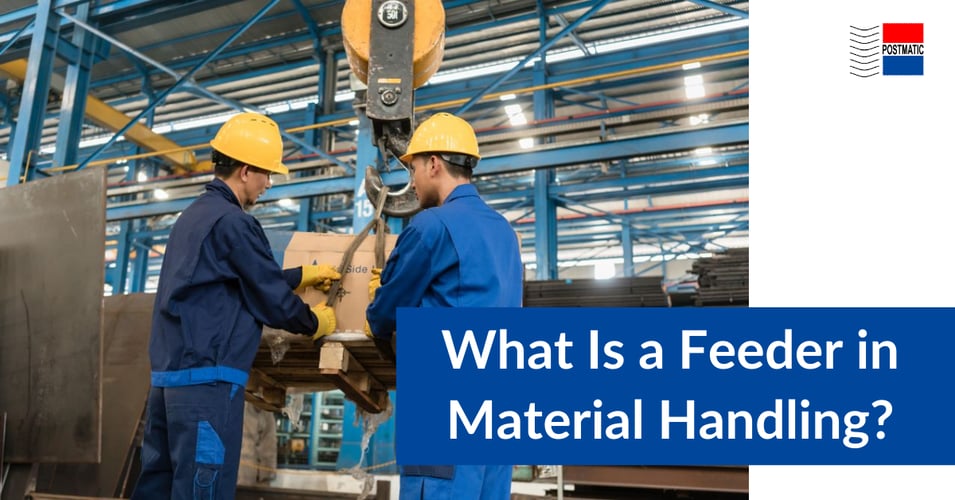What Is a Feeder in Material Handling?

Table of Contents
Understanding different components in material handling is crucial for optimizing processes. Among these components, the feeder plays a significant role. But, what exactly is a material feeder? Let’s explore the fundamental aspects of feeders in material handling, including their functions, roles, and types.
What Exactly Is a Feeder?
A feeder is a mechanical device that transfers materials from a storage unit to a processing unit at a controlled rate. Feeders are used in various industries to feed materials into machines at a rate that matches the processing capacity. This helps to maintain an uninterrupted production flow.
Feeders come in various types, each designed to handle specific materials and conditions. These include:
- Belt Feeder: Commonly used for transporting bulk materials, belt feeders are a type of friction feeder that provide a reliable method for managing the flow of materials in industries such as mining and construction.
- Screw Feeder: Perfect for handling granular or powdered materials, screw feeders are common in sectors like pharmaceuticals and food processing to ensure uniform distribution.
- Rotary Feeder: Typically used to manage the flow of bulk materials with abrasive properties, rotary feeders are essential in the cement and chemical industries.
- Vibratory Feeder: Designed to move small parts with precision, vibratory feeders are indispensable in manufacturing environments, particularly in assembly lines and packaging operations.
- Apron Feeder: Built for heavy-duty applications, apron feeders are ideal for handling abrasive or cumbersome materials common in the mining and mineral processing sectors.
The choice of feeder depends on the material characteristics and the specific requirements of the production process. Understanding these factors is essential for selecting the right feeder for your needs.
What Is a Feeder in Material Handling?
A feeder in material handling regulates the flow of materials from one process to the next. It ensures the consistent supply of materials at the right pace and quantity. Feeders are key for maintaining system efficiency and preventing bottlenecks. They are essential for industries that require precise material flow, such as manufacturing, packaging, and distribution. By controlling the input of materials, feeders help in maintaining the quality and consistency of the production process.
For more information, check out our “What is a feeder in material handling?” PDF, which is a comprehensive guide on the use and applications of feeders.
What Is a Feeder in Material Handling? An Example
This diagram shows how feeders supply raw materials to a production line at a consistent rate.

What Is the Function of Feeders in Material Handling?
The primary function of feeders in material handling is to control and manage the flow of materials between different stages of a process. Feeders help to minimize waste by ensuring that only the required amount of material is processed at any given time. This not only reduces costs but also enhances the overall productivity of the system. Additionally, feeders can be customized to suit specific requirements, making them versatile tools in various industrial applications.
Feeders handle different types of materials, from powders and granules to large items. By providing a controlled feed rate, they maintain the desired processing speed and output quality. They also play a critical role in ensuring safety within the handling system. By controlling the material flow, they reduce the risk of overloading or underloading equipment, which may lead to operational issues or accidents.
The Role of a Feeder System
A feeder system is a vital link between various stages of production, allowing each phase to receive the necessary materials without delays. By using automated feeder systems, material handlers enhance performance further still. For instance, sensors and control systems mean feeders automatically adjust the feed rate based on real-time data, which optimizes material flow and minimizes the need for manual intervention.
Conclusion
Feeders are essential components in material handling, playing a vital role in regulating the flow of materials and enhancing process efficiency. They ensure a steady supply of materials, reduce waste, and improve safety. Whether you're looking to implement a new feeder system or optimize an existing one, understanding the functions and roles of feeders is crucial. For more insights on material handling solutions, explore our resources.




.png?width=400&name=What%20Is%20a%20Feeder%20in%20a%20Machine%20Called%20(1).png)

